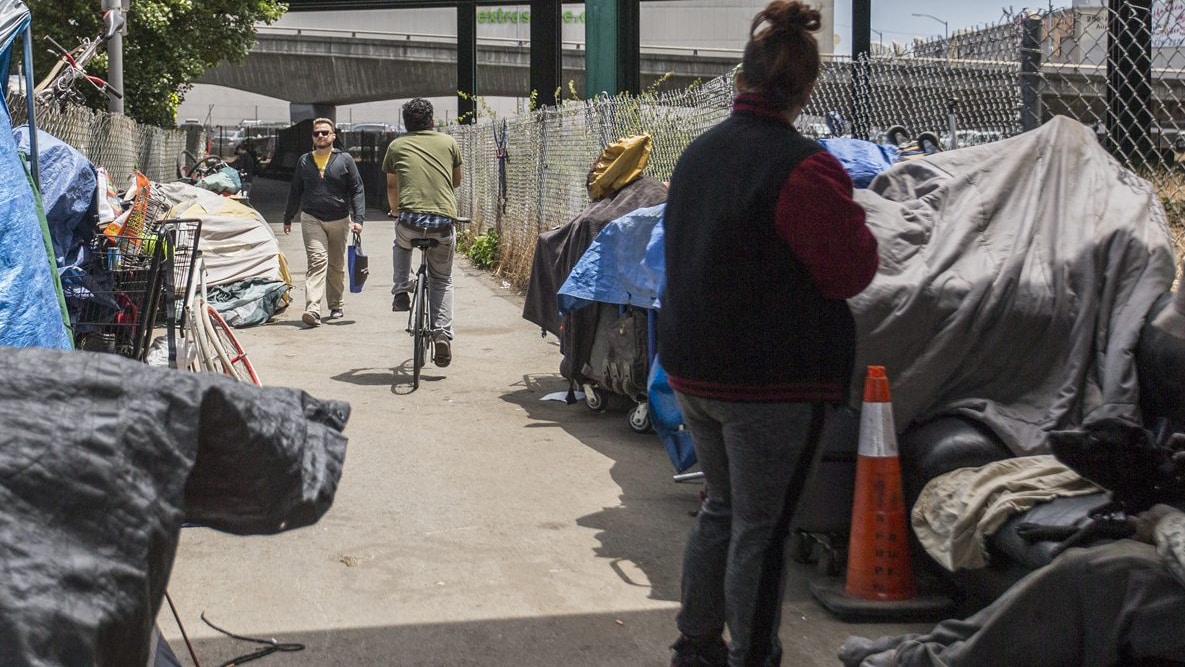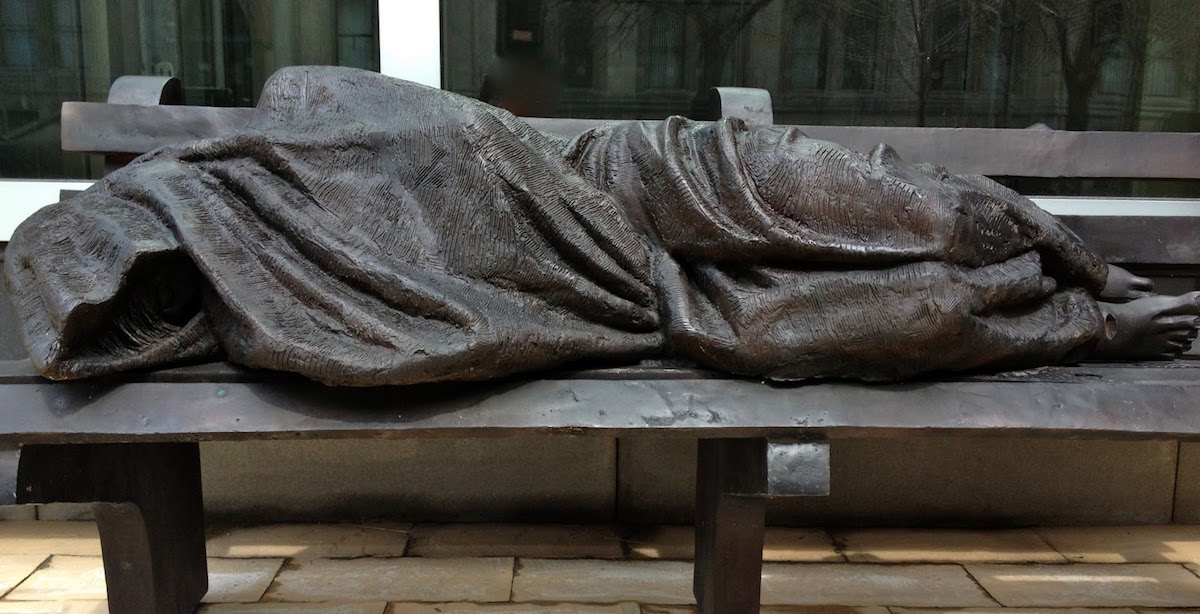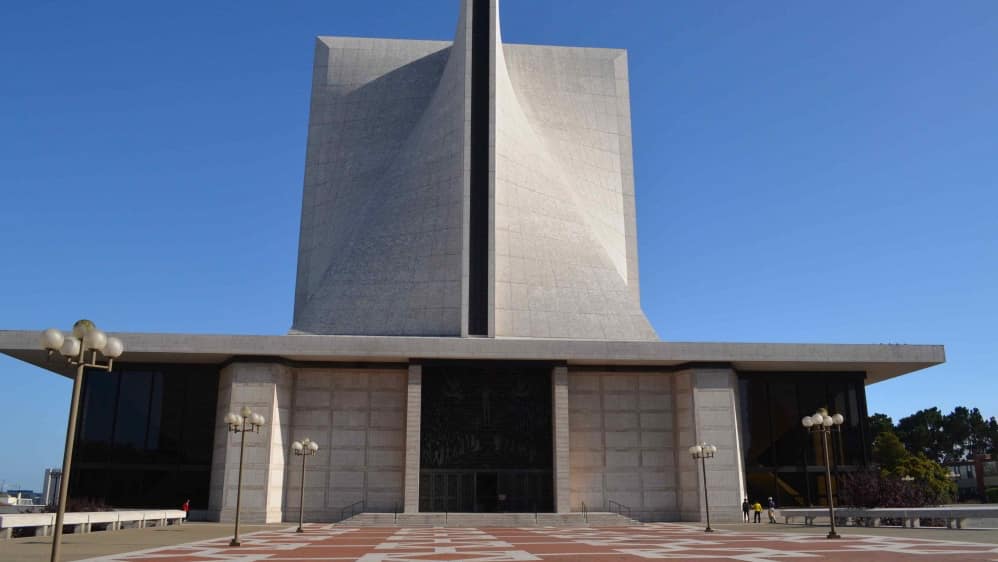In 2015, Saint Mary Cathedral in San Francisco wanted to keep homeless people from sleeping in four sheltered entryways. Well, the homeless people did more than just sleep; they often urinated and defecated there and left drug paraphernalia behind. The Archdiocese of San Francisco sought to solve the problem by installing a sprinkling system that would douse the entryways for thirty seconds each hour during the evening. The hope was that the homeless would become discouraged and avoid the church.
However, in this age of political correctness, those who represented the homeless went to the local radio and television stations and accused the Archdiocese of “very inhumane” treatment of the homeless and that the sprinkling system certainly did not represent the “basis of Catholic teaching.”
Deluged (sorry, I couldn’t resist) by bad publicity, the Archdiocese apologized to the homeless community and removed the sprinkling system.
In response, I wrote an article that suggested some ways the Archdiocese could alleviate the suffering of the homeless and, at the same time, gain the approval of the citizenry. I admit that the article was irreverent, somewhat crude, and very much tongue-in-cheek. It was so far-fetched that I figured no one could mistake it for anything other than wild sarcasm. But now the homeless in San Francisco are making me look rather prescient.
A 2018 report by the San Francisco Travel Association (SFTA) blames a significant slow-down in tourism on the homeless population and the resultant hygiene problems on the streets. SFTA CEO Joe D’Alessandro explains that tourists “wonder why does one of the wealthiest cities in the world in one of the wealthiest states have streets that look like this? Why are there people living on the streets in these conditions?”
What are the “conditions” that bother the tourists? One is the plethora of homeless “camps” spread throughout the city. These tent cities take up space on many sidewalks, forcing pedestrians to walk around them. And walking around is not that easy, for the homeless urinate and defecate wherever and whenever they choose. NBCBayArea did some research and found that “Within 153 blocks of downtown, there were over 300 piles of feces,100 drug needles and trash on every block.”
And the problem is multiplying. In 2011, the city received 6300 complaints about the camps and their lack of hygiene. In 2016, the number of complaints escalated to 44,000. John Daniel Davidson, in The Federalist, highlights the extent of the problem:
Homelessness has always been a feature of life in the Golden Gate City, but the encampments–and the concentrations of used needles, feces, and urine that come with them–are new. Dozens of tent camps now line freeway underpasses and sidewalks throughout the city, despite a 2016 ordinance authorizing city officials to clear them out. The best the city can do, according to Mohammad Nuru, director of the city’s Department of Public Works, is stay in “firefighter mode.” “When you have needles or you have poop or you have places with the stench of urine, those are priorities,” he said in a recent interview. “In Public Works land, that’s like a 911 call.”
Another “condition” that is causing serious problems in San Francisco is the aggressiveness of mentally deranged people who also live on the streets. In a recent article, the San Francisco Chronicle addressed the issue and its impact on tourism: The newspaper gave several examples of the actions of mentally ill people. One man walked up behind a visiting family and grabbed a little boy and began shaking him. An eyewitness said no one came to the family’s aid, and, fortunately, the man eventually walked away.
Every day there is a homeless woman on one street who screams loudly and throws her trash and empty bottles into the street. But, according to authorities, since she isn’t hurting anyone, there is nothing they can do.
The general manager of the Chancellor Hotel complained that recently three mentally ill people entered his hotel, pulled the fire alarm, threatened some of the staff, and started a fight with a bellman. The general manager said, “Any time you call the police for a person that’s causing a problem, they show up and just basically send them on their way. There’s no question it’s a turn-off for people.”
If money could solve these problems, things would be different today. But the city already spends $305 million a year to fight homelessness. And since there are approximately 7,500 homeless in the city, that means a little over $40,000 is spent for each person. And, yet, the problem gets worse, and it’s starting to have a deleterious effect on the city economy.
Many of the liberal elites in San Francisco derided the Archdiocese for its sprinkling system at the cathedral. But now that the homeless are spreading their feces, urine, and needles around the entire city, it’s a different story. What goes around comes around?






